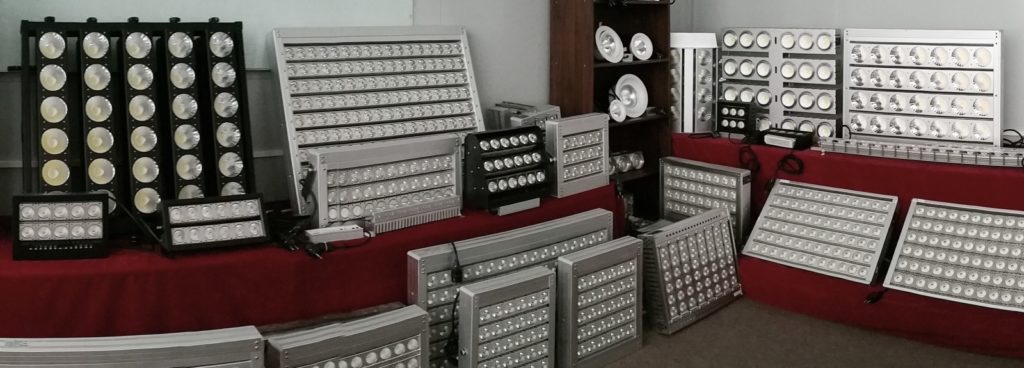Lumen of photography light

What is the lumen
Lumen is the English abbreviation of Ansi Lumen, or Lumens.Lumen, it was originally a unit for indicating the luminous flux, that is, the perceptible energy of the human eye radiated into the surrounding space by the light source in a unit time. Symbol is Φ, 1 lumen is equivalent to the energy radiated by a monochromatic light source of 1 / 680W
(1) Luminous flux (φ) In a unit of time, the light source emits energy to the surrounding space that makes the human eye feel, which is called luminous flux. It is represented by the symbol φ. The practical unit is lumens (lm), referred to as flow. The number of lumens (lm / w) emitted by a unit of electric power is called the luminous efficiency.
(2) Luminous intensity (I) The luminous flux radiated by a light source in a unit solid angle (spherical degree sr) in a specific direction is called the luminous intensity of the light source in that direction, referred to as light intensity, which is represented by the symbol I. The unit is Candela (cd) for short. Candela is the basic unit of the International System of Units (formerly known as “candlelight”, commonly known as “branchlight”). 1 (cd) = 1 (lm) / 1 (sr) 1 lux is equivalent to the illuminance when the luminous flux received on the illuminated surface of 1 square meter is 1 lumen, and the illuminance of natural light under different light conditions is: direct sunlight on the ground on sunny days Approximately 100,000lx, sunny illuminance in the shade is about 10000lx, sunny illuminance near the north window is about 2000lx, sunny indoor central illumination is about 200lx, sunny indoor corner illumination is about 20lx, sunny moonlight illumination is about 0.2lx, at 40W incandescent

The illuminance at a distance of 1m is about 30lx. The energy emitted by the light source exists in the form of electromagnetic waves. This energy is called radiant energy, and the unit is Joule (J). The radiant energy emitted by the light source per second is called radiant flux. flux), the unit is Watt (W). For the same light source, the greater the radiant flux, the brighter the human eye will feel. However, if two light sources with the same radiant flux emit light waves of different wavelengths, the perception of brightness and darkness caused by the human eye is different, which means that they have different luminous efficiency. The higher the luminous efficiency, the more The eyes will feel brighter. Therefore, what really affects the visual brightness of the human eye is the product of the radiant flux and the luminous efficiency, which is what we call the luminous flux, and the unit is lumens (lm). According to international regulations, the luminous efficiency of monochromatic light with a wavelength of 555 nanometers is set to 1, and the radiant flux per watt of monochromatic light with this wavelength is equal to 683 lumens. For monochromatic light of other wavelengths, the luminous efficiency is based on the luminous efficiency curve, and the luminous flux can be obtained from this formula. The half-life of the LED (that is, the time during which the light output is reduced to half the initial value) is about 10,000 to 100,000 hours.
Is the higher the led photography light lumens, it is better?
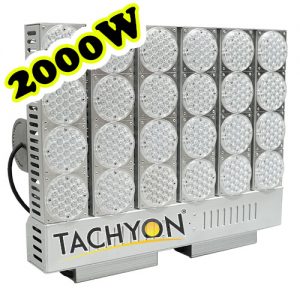 This is negative, because the higher the LED current, the higher the luminous lumen, but the increased lumen luminous flux is not a multiple relationship, but an exponential relationship. That is, if the current doubles, the luminous flux does not double, but Increase a little bit and the current reaches a certain value, the LED will be damaged, the LED has an optimal current value, the larger the current, the hotter the LED, the faster the death, so not the higher the better.
This is negative, because the higher the LED current, the higher the luminous lumen, but the increased lumen luminous flux is not a multiple relationship, but an exponential relationship. That is, if the current doubles, the luminous flux does not double, but Increase a little bit and the current reaches a certain value, the LED will be damaged, the LED has an optimal current value, the larger the current, the hotter the LED, the faster the death, so not the higher the better.
- High current will accelerate light decay.
- Color rendering will decrease. Light attenuation and color rendering are important reference indicators for lamps. Moreover, high-luminance lamps are closely related to the use environment. Outdoor lighting, car lights and remote projection lamps require high-luminance LED light sources. Generally, home lighting does not need excessive lumens, because home lighting is composed of a variety of lamps. Success, we just need to choose the right color temperature, color rendering and luminous flux products.
How to calculate the luminous flux (lumen ) of LED lamps?
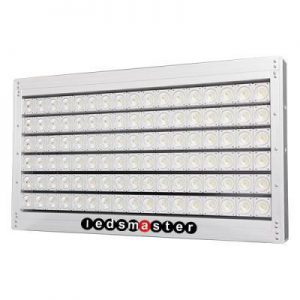 Luminous flux refers to the derivation of radiant flux that is evaluated in accordance with the visual characteristics of the human eye in accordance with international regulations, and is represented by the symbol Φ (or Φr). The relationship between the luminous flux and the radiant flux is to turn left | turn to the right. Km is the maximum value of the spectral visual efficiency, which is equal to 683lm / W; V (λ) is the standard spectral visual efficiency specified by the International Commission on Illumination (CIE) Function; Φeλ is the spectral intensity of the radiant flux. The unit of luminous flux is lm (lumens); λ is the spectral optical efficiency. 1 lm is equal to the luminous flux emitted by a point light source with a uniform luminous intensity of 1 cd (candela) within a solid angle of 1 sr (spherical degree), that is, 1 lm = 1 cd · sr. The nominal luminous flux of a 40W ordinary incandescent lamp is 360lm, the nominal luminous flux of a 40W daylight fluorescent lamp is 2100 lm, and the luminous flux of a 400 W standard high-pressure sodium lamp can reach 48000 lm.
Luminous flux refers to the derivation of radiant flux that is evaluated in accordance with the visual characteristics of the human eye in accordance with international regulations, and is represented by the symbol Φ (or Φr). The relationship between the luminous flux and the radiant flux is to turn left | turn to the right. Km is the maximum value of the spectral visual efficiency, which is equal to 683lm / W; V (λ) is the standard spectral visual efficiency specified by the International Commission on Illumination (CIE) Function; Φeλ is the spectral intensity of the radiant flux. The unit of luminous flux is lm (lumens); λ is the spectral optical efficiency. 1 lm is equal to the luminous flux emitted by a point light source with a uniform luminous intensity of 1 cd (candela) within a solid angle of 1 sr (spherical degree), that is, 1 lm = 1 cd · sr. The nominal luminous flux of a 40W ordinary incandescent lamp is 360lm, the nominal luminous flux of a 40W daylight fluorescent lamp is 2100 lm, and the luminous flux of a 400 W standard high-pressure sodium lamp can reach 48000 lm.
If the light effect (lumen / watt Lm / W) and power (watt W) are known, then the luminous flux = light effect * power.
Given the illuminance (lumen / decimeter Lm / MM) and irradiated area (square meter MM), then the luminous flux = illuminance * area. For example: the lamp has five 1W high-power light sources, and the single luminous flux of the large power source is 80LM. 80LM * 5PCS = 400LM is issued, but when assembled into a lamp, the actual lamp luminous flux is only 350LM. This is the luminous efficiency. Then the light effect of this lamp is 350LM / 400LM = 87.5%
What are the factors affecting the lumen value
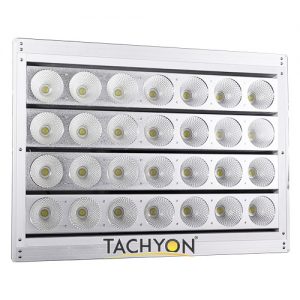 Power
Power
- Luminous value of the luminaire divided by the wattage of the luminaire is the luminous efficiency of the luminaire: The larger the value of lumens / watt (LM / W), the higher the brightness of different luminaires at the same electrical power, that is, That is, at the same brightness, the lower the input power of the high-efficiency lamps, the more power-saving.
- According to the ambient light source of the equipment used, if the use environment is relatively dark, you can choose a lower brightness machine. If it is for teaching, if you use it in a very bright environment, you need to choose a projector with a higher brightness. For a classroom of 30-50 people, you can choose 3500 lumens to 4500 lumens. Of course, the higher the brightness, the higher the price. The higher; if it is a home environment and the light is relatively dark, it is more appropriate to choose a low brightness. Manufacturers generally have special products for the home environment;
- Brightness also depends on the size of the screen you are using, that is, selecting the size of the screen. If the screen is relatively small, the brightness does not need to be too high; 3. Another point is that the closer the projector is installed to the screen, the closer the brightness is,
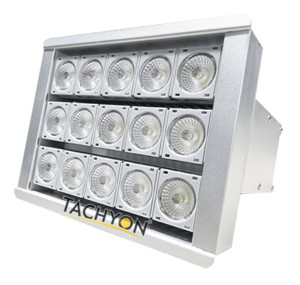 Voltage
Voltage
- In general, excessive voltage and current will highlight to burn out the lamp beads, which has a great impact on the life of the lamp beads.
1.The higher the LED current, the higher the luminous lumen, but the increased lumen luminous flux is not a multiple relationship, but an exponential relationship. That is, if the current doubles, the luminous flux does not double, but increases a little. Moreover, when the current reaches a certain value, the LED is damaged, and the LED has an optimal current value. The larger the current, the hotter the LED, and the faster the failure.
- The under-voltage and under-current will be low, and will not light up, which will not have a great impact on the life of the lamp beads. According to the parameters of the selected LED, a suitable constant voltage and constant current power supply is selected.
- Characteristic voltage: LED lamp beads use low-voltage power supply, the power supply voltage is between 2-4V, which varies according to different products, so it is driven by a safer power supply than high-voltage power supply, especially suitable for public places; current: work The current is between 0-15mA, and the brightness becomes brighter as the current increases; Efficiency: The energy consumption is 80% less than that of incandescent lamps with the same light efficiency; Applicability: Very small, the LED chip of each unit is a 3-5mm square, so Can be made into various shapes of devices, and is suitable for variable environments; response time: the response time of its incandescent lamp is milliseconds, the response time of LED lamps is nanoseconds; environmental pollution: no harmful metal mercury.
Light emitting principle

LED light source is a new type of light source in the laser family. It belongs to the “weak laser” category and is considered to be one of the most ideal medical light sources for humans in the future. The LED light source itself does not contain harmful substances such as mercury and lead, has no infrared and ultraviolet pollution, and does not cause pollution to the outside world during use. LED scientifically called light-emitting diode, referred to as LED, is a solid-state semiconductor device capable of converting electrical energy into visible light, which can directly convert electrical energy into light energy. The unit board is one of the core components of LED display. The quality of the unit board directly affects the display effect. The unit board consists of an LED module, a driver chip and a PCB circuit board. LED modules, in fact, are composed of a plurality of LED light-emitting points encapsulated with resin or plastic dot matrix. Because LED lamps are lighting appliances, the most important parameter of lighting products is the lumen value, followed by the power of the lamp.
There are four reasons belowe:
- Lumen (LM) is a unit of luminous flux. Lumens simply means the brightness of a candlelight at a meter away.
- The greater the number of lumens of a lamp, the brighter the light emitted by this lamp.
- Luminous value of a luminaire divided by the wattage of the luminaire is the luminous efficiency of the luminaire: The larger the value of lumens / watt (LM / W), the higher the brightness of different luminaires at the same electrical power, that is, That is, at the same brightness, the lower the input power of the high-efficiency lamps, the more power-saving.so it is more important to look at the lumens than to look at the wattage.
Structural design process

The LED lamp is a chip of electroluminescent semiconductor material. It is cured on the bracket with silver or white glue, and then the chip and the circuit board are connected with silver or gold wires. The periphery is sealed with epoxy resin to protect the internal core wires. Role, the final installation of the shell. Based on thermal considerations. When LED lamp beads work, part of the electrical energy is converted into thermal energy, which causes the temperature inside the lampshade to rise. If the temperature is not reduced, it may affect the performance of the driving circuit, reduce the service life of the lamp beads, and cause deformation of the plastic structure of the lamp housing. This hollow design increases the contact area between the plastic shell and the air, which helps to dissipate heat, and the design also looks beautiful.
Cooling / power adapter does not match the light
For LED lighting fixtures, one of the most critical technical problems is heat dissipation. Poor heat dissipation causes LED driving power and electrolytic capacitors to become short boards for the further development of LED lighting fixtures, and it also causes the premature decline of LED light sources.
Therefore, only by expelling the heat as soon as possible and effectively reducing the cavity temperature in the LED lamp, can the power source be protected and the LED light source from premature aging due to long-term high temperature work.At present, the main types of LED lamp radiators are die-cast aluminum radiators, car aluminum radiators, and cold-forged aluminum radiators.


